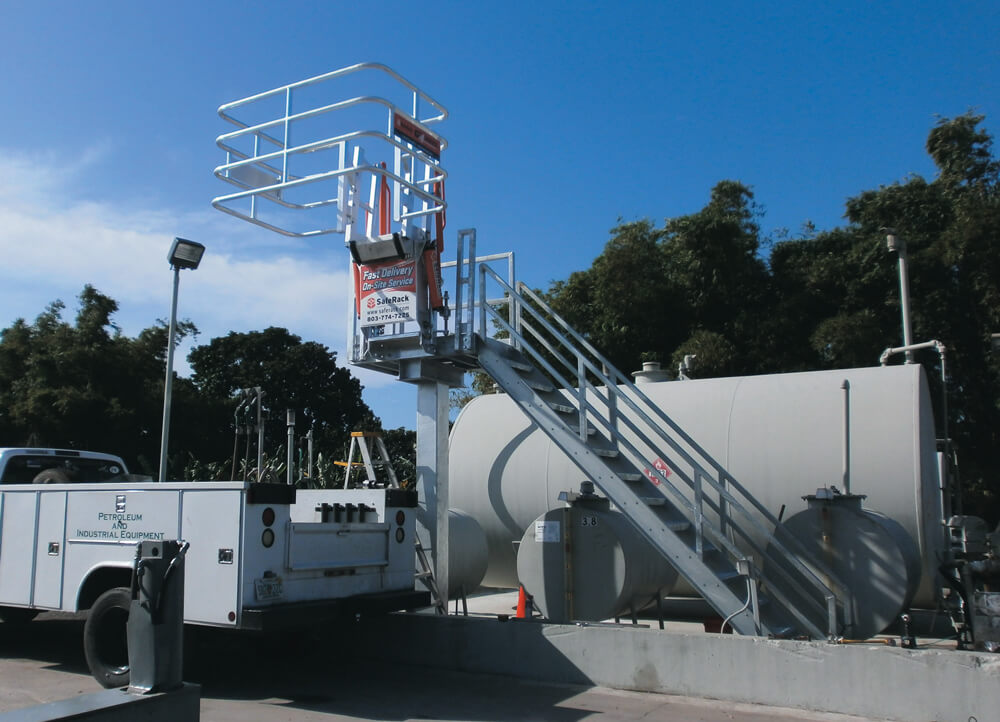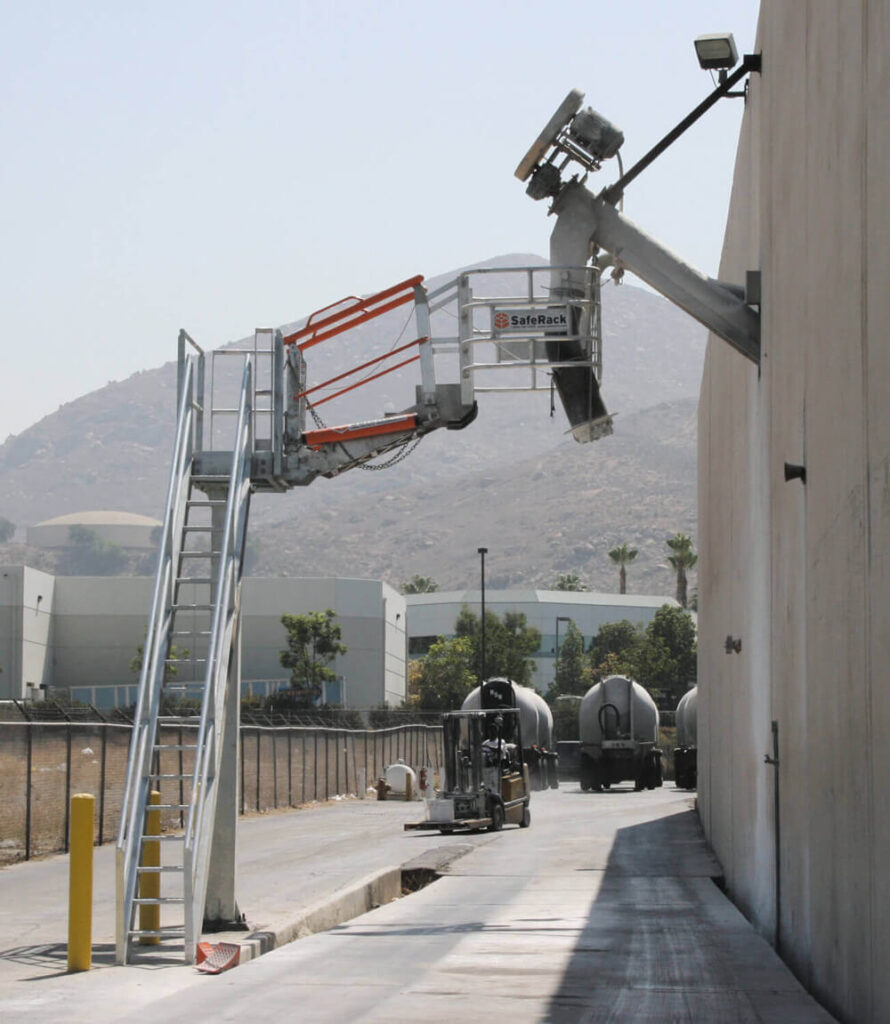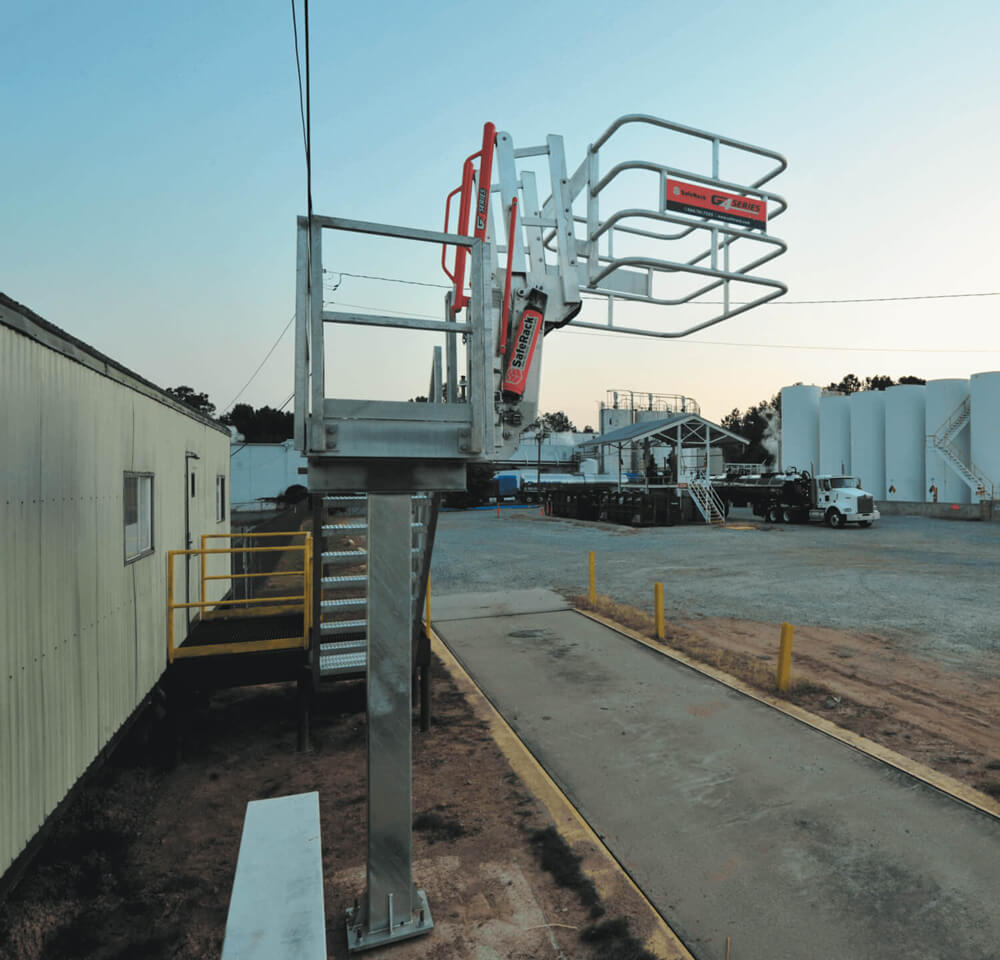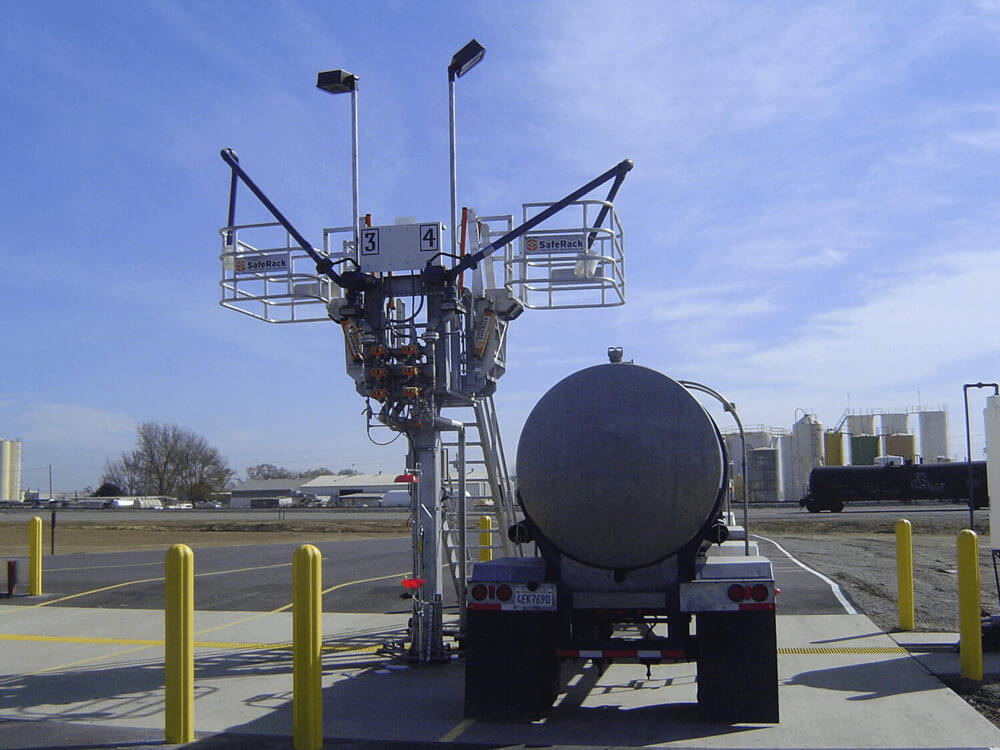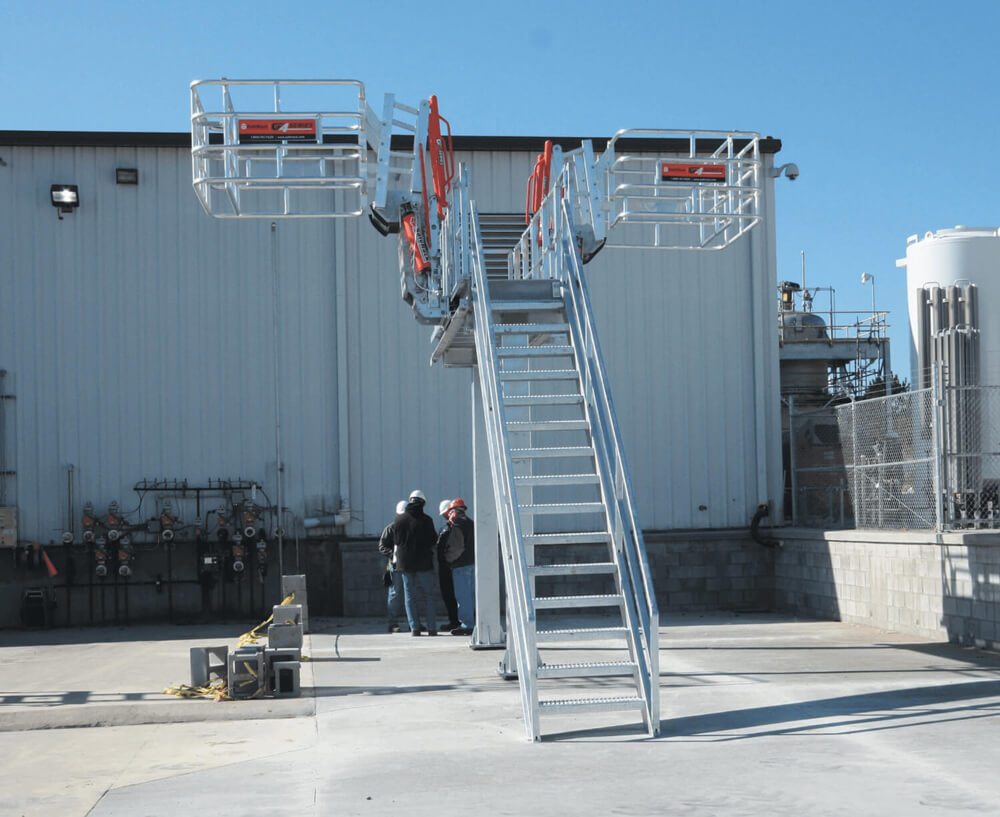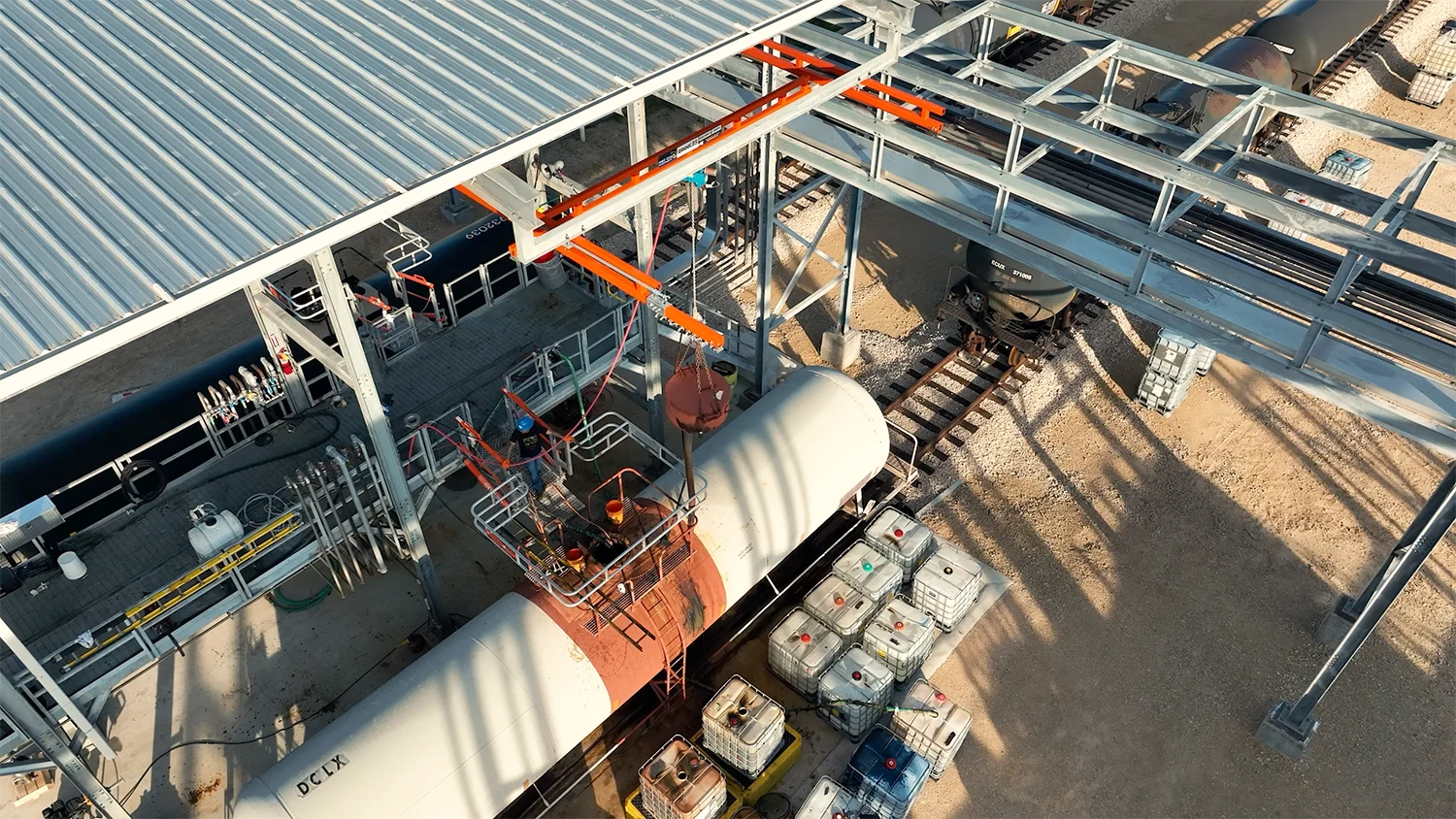
White Liquor
Specialized Loading, Containment & Fall Protection Solutions
Safe & Efficient Loading and Safety Solutions
SafeRack offers customized loading and unloading systems designed to enhance safety and efficiency in handling white liquor. Our solutions include closed-loop loading arms to minimize vapor release, spill containment systems to prevent environmental contamination, and OSHA-compliant fall protection equipment to safeguard operators during top-loading operations.
By implementing these safety measures and utilizing specialized equipment, pulp and paper mills can effectively manage the risks associated with white liquor, ensuring a safer working environment and compliance with industry regulations.
- Fall Protection – Operators require secure gangways and safety cages during loading operations to prevent falls.
- PPE Compliance – Use of chemical-resistant gloves, protective eyewear, and full-body suits is essential to prevent skin and eye contact.
- Corrosion-Resistant Equipment – Utilizing stainless steel or appropriately lined containment systems is vital due to the caustic nature of white liquor.
- Toxic Gas Exposure – Proper ventilation systems are necessary to mitigate exposure to hazardous gases that may be released during handling.

White Liquor
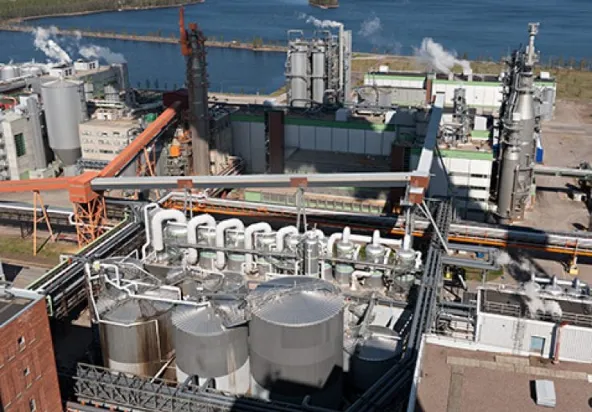
Enhancing Workplace Safety with Reliable, Compliant Access Systems
Understanding White Liquor in the Pulp & Paper Industry
White liquor is a strongly alkaline solution primarily composed of sodium hydroxide (NaOH) and sodium sulfide (Na₂S). It plays a crucial role in the Kraft process, where it breaks down lignin and hemicellulose to separate cellulose fibers from wood chips, facilitating pulp production.
Chemical Properties & Safety Considerations
Due to its high alkalinity, white liquor is highly corrosive and poses significant health risks, including chemical burns and respiratory hazards. Proper handling protocols are essential to prevent exposure and ensure environmental safety.
White Liquor 101: Role, Hazards, and Safety in Pulp Mill Operations
White liquor is a caustic aqueous solution consisting primarily of sodium hydroxide and sodium sulfide. It plays a key role in the Kraft process, the dominant method for producing pulp in the paper and packaging industry. Used to digest wood chips under high-pressure steam—typically around 150 psig—white liquor breaks down lignin and hemicellulose to free cellulose fibers. The result is brown stock pulp and a residual by-product known as black liquor.
White liquor is essential to the paper mill digestion phase but is classified as a strong white liquor due to its high alkalinity and reactivity. During the cooking process, organic sulfur compounds are released—responsible for the pungent odor often associated with Kraft mills. These gases, including methyl mercaptan and hydrogen sulfide, present both environmental and occupational safety concerns.
As with other paper mill liquors—green, black, and white—white liquor is highly corrosive and may contain toxic ingredients. It can release hazardous vapors, dust, or mists during handling, especially when transferred or heated, making proper containment, ventilation, and protective equipment critical.
If exposure occurs, the following first aid measures should be taken immediately:
- Move the individual to fresh air to reduce the risk of inhaling vapors.
- Remove any contaminated clothing and wash the affected skin thoroughly with soap and water.
- If the substance has come into contact with eyes, flush them with tepid water for a minimum of 15 minutes.
- If white liquor is ingested, do not induce vomiting; instead, contact a poison control center or seek emergency medical attention.
Understanding what white liquor is and how to safely handle it is essential for every paper mill that uses the Kraft process. With appropriate training, engineered safety systems, and personal protection, the risks associated with white liquor can be significantly reduced in pulp and paper operations.
White Liquor Loading & Unloading Procedures in the Paper Industry
The safe handling of white liquor in pulp mills depends on well-designed loading and unloading systems that minimize exposure to corrosive chemicals and hazardous gases. As a highly caustic component used in the Kraft pulping process, white liquor requires closed-loop systems and dedicated equipment to maintain safety during transfer operations.
Railcar Loading and Unloading
White liquor is typically transferred using closed-loop loading systems that include stainless steel loading arms and vapor return hoses. These systems reduce the risk of operator exposure to hydrogen sulfide and other sulfur gases released during transfer. Railcars used for transporting white liquor are commonly 26,000-gallon DOT-111 insulated tank cars, engineered to handle corrosive chemicals. They typically measure 9 feet in outside diameter and 45 to 50 feet in overall length, featuring 6-by-6-foot center or offset crash box openings for top-loading access.
SafeRack supports pulp and paper facilities with custom-engineered white liquor railcar loading platforms designed for security, compliance, and efficiency. Required equipment includes GX Gangways with safety cages that offer OSHA-compliant fall protection for top-loading operations. Spill containment systems, including track pans and berms, help prevent leaks and environmental contamination. In addition, ventilation systems and gas detectors are used to monitor toxic emissions such as hydrogen sulfide, ensuring a safer working environment.
Tank Truck Loading and Unloading
Tank trucks used for white liquor must meet DOT standards and are typically MC 307 trailers or ISO chemical containers suitable for transporting strong white liquor. These trucks are most often bottom-unloaded using remote-controlled stop valves, limiting direct operator exposure during transfer.
Supporting safe white liquor truck loading systems, SafeRack provides corrosion-resistant pumps and hoses designed specifically for handling caustic liquids. Grounding and bonding systems are installed to prevent static discharge during product flow, while emergency shower stations and eyewash units are strategically placed near loading zones to offer immediate first aid in the event of a spill or splash exposure.
By implementing specialized white liquor handling equipment, SafeRack helps facilities meet regulatory standards and reduce risk throughout every stage of bulk chemical transfer—whether by rail or truck.
Products
Semi Trailer & Truck Steps
Semi-truck steps for loading semi and flatbed trailers
Break Away Smart-Hose Safety System
Smart-Hose™ Break-Away Safety System (LL3-B) can help protect your facility from the potentially devastating consequences associated with pull-away incidents.
Samplers and Oil Thieves
Crude oil samplers, including oil thieves and sample catchers.
Hose and Electric Reels
Our hose and electric reels selection help keep your hose neatly wrapped away when not in use. The hose reels come with ready-to-mount brackets for easy installation.
Gate Openers and Hopper Car Shakers
The PCS-3 Hopper Car and Hopper Trailer Shakers can be modified to comply with force and design requirements set for the ACF “center-flow” hopper car, Contact us for details.
Guardrail Systems
Guardrail Systems from SafeRack, the leader in fall protection, bulk loading, and truck, railcar, and vehicle access.
Bollards and Bumper Posts
The Bollards and Bumper Posts provide durable protection, custom sizes, and easy-to-install covers for enhanced facility safety.
Loading Dock Stairs
Prefabricated IBC, ADA, or OSHA Aluminum Loading Dock Steps that bolt together in about an hour.
Signs and Signals
Signs and Signals
Drench Showers
Emergency Drench Showers and Safety Eyewash Stations
Pipe Racks
Prefabricated Pipe Racks Constructed Faster and Easier Than Ever Before
Tools and Loading Accessories
A comprehensive range of facility and loading terminal equipment, accessories and safety solutions.
Grounding & Monitoring
Protect personnel, product, and terminals with static grounding (earthing) solutions
Safety Gates
Industrial safety swing gates, facility guardrails, mezzanine gates and barriers gates.
Spill Containment
SPCC and EPA compliant solutions. Railcar track pans, truck spill containment, drum and IBC spill pallets, and industrial containment berms.
Top Loading Arms
Top Loading Arms
Loading Arms & Couplings
Truck, rail, and marine bulk fluid transfer top/bottom loading arms, couplings, swivel joints, hoses, and breakaways.
Portable Access Platforms
SafeRack’s MAUI mobile access units provide secure, adjustable stair solutions for safely accessing elevated truck and railcar work areas, even in the most challenging environments.
MaxRack Elevated Platforms
Powered elevating platform system for accessing railcars and trucks
Gangways
Truck, Railcar and Marine Gangways, Safety Cages, and Inspection Services
Stairs & Work Platforms
Fixed and Mobile Access Stairs, Work Platforms, Crossover Stairs, Rolling Stairs & Mobile Platforms, Roof Stairs and Access, Ship Ladder
White Liquor Handling Solutions
The following examples showcase SafeRack’s loading and unloading solutions tailored for white liquor applications. Our team collaborates with you to develop customized systems that meet your facility’s specific requirements, ensuring safety and efficiency in handling white liquor.
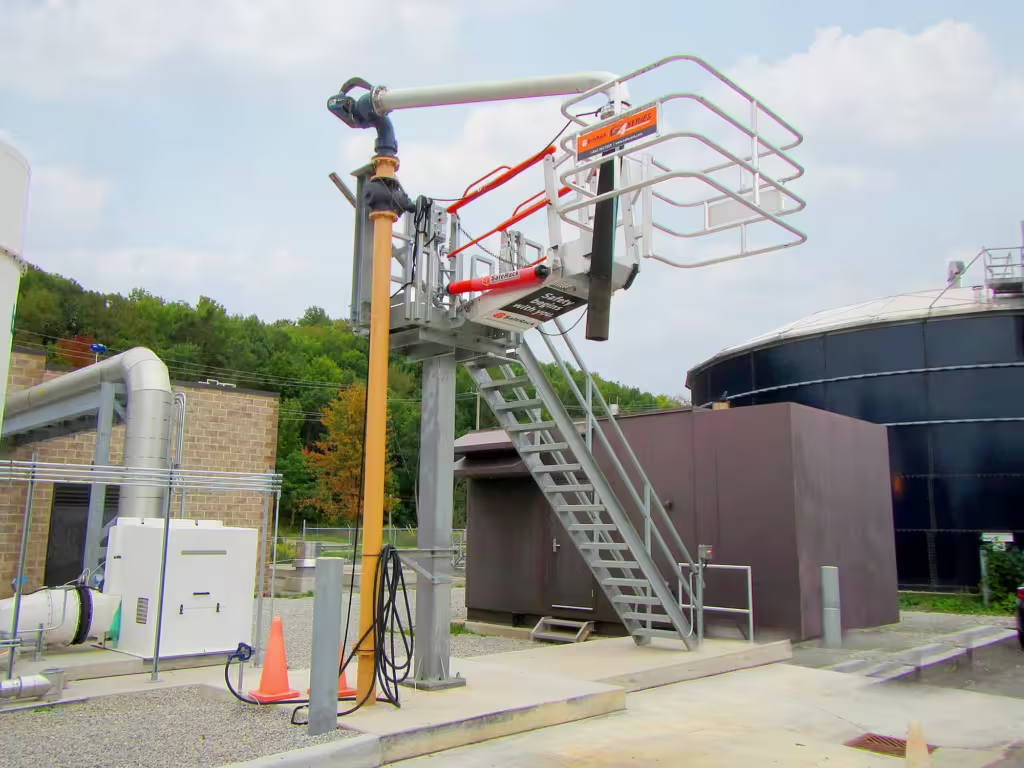
Loading Gangways
A wider access gangway (48″-60″ is preferable) as it helps improve access and egress to and from the vessel. In addition, a wider gangway will reduce the risk of the operator’s PPE getting caught, torn, or damaged, and will improve productivity and safety. Powered gangway solutions are also an option, with both hydraulic and pneumatic solutions being commonly used.
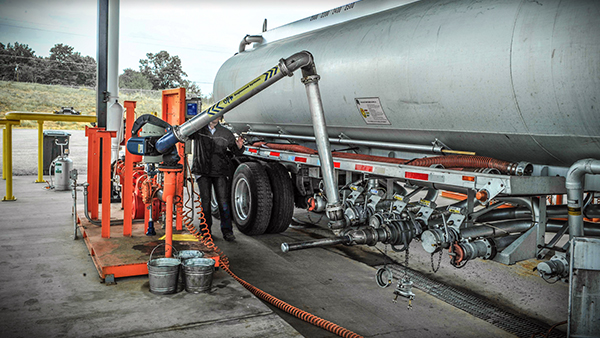
Loading Arms
In paper mills, Tall Oil Fatty Acid (TOFA), Black Liquor, White Liquor, and Green Liquor (Spent Pulping Liquor) are typically loaded into railcars or tank trucks via boom-supported stainless steel loading arms or chemical hoses with a flange connection. The arm or hose will have a top inlet with a control valve to ensure that it is self-draining after use and is supported along the length of a mechanical loading arm to improve handling, known as a by-pass arm. You can install one liquid and one vapor arm, or mount both the liquid and vapor hoses on one by-pass arm.
For unloading, typically you would use a rigid stainless steel self-draining loading arm with Buna-N, PTFE or Viton seals. Purge lines can be fitted to the arm, for nitrogen purging. Additional features such as parking latches with proximity sensors can be incorporated into the total system to ensure the arm is correctly stowed when not in use before any rail movement can occur.
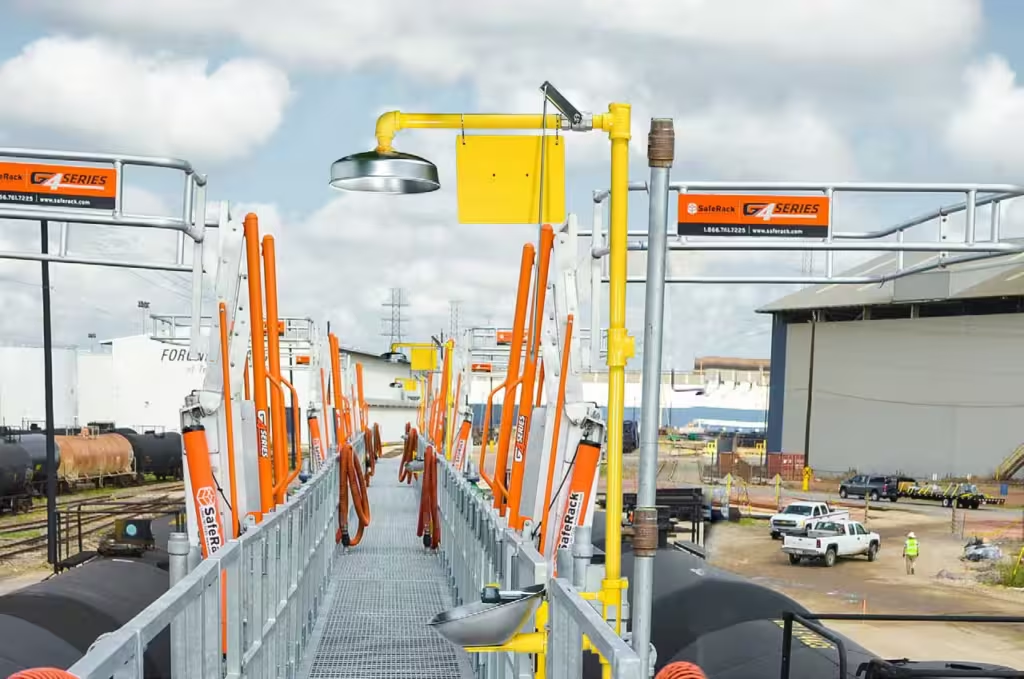
Eye Wash/Drench Showers
Spill containment pans will be provided at the point of loading operations and are an essential piece of equipment in overall site safety and environmental protection
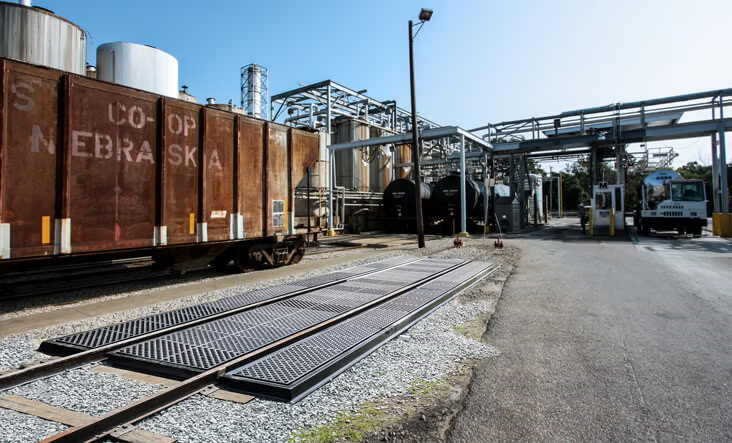
Spill Containment
Spill containment pans will be provided at the point of loading operations and are an essential piece of equipment in overall site safety and environmental protection.
Wheel chocks allow for safe access to and storage of treatment chemicals, while spill containment pans utilized at the point of loading operations serve as essential safety and environmental protection tools.
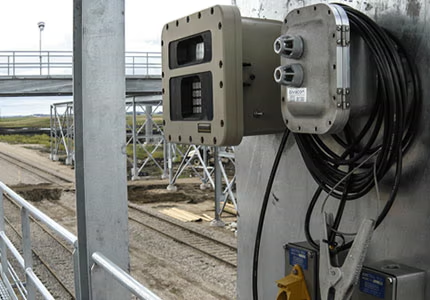
Grounding
While much of the products being transferred in the pulp and paper manufacturing aren’t combustible, it is an industry best practice to include the grounding of all vessels before starting the (un)loading process.
Ground controllers — ensure true grounding before product flow is permitted
Explosion-proof enclosures — meet or exceed UL, CSA, and Ex requirements
Non-sparking tools are also recommended while working around this product
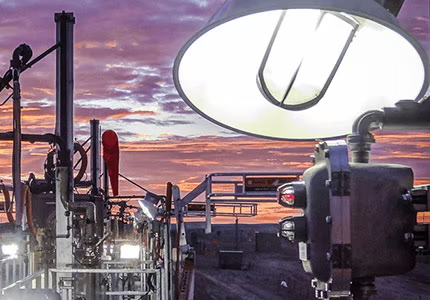
Loading Platform Options
Lighting – General exterior and task lighting to illuminate work and walk areas.
Platform & Canopies – Full platform canopies reduce exposure to the elements and improve the safe and productive loading operation from the operator’s perspective.
Operator Shelter—Depending on your site requirements, consider the requirement of an operator or guard building to keep personnel out of the elements. This can be customized to meet specific site requirements.
Wheel Chocks – SPCC options to allow for safe access and storage of water treatment chemicals.

Safety Gates, Stairs, Ladders, & Platforms
Safety Gates will be installed at the top of stairs and any other openings to ensure operator safety.
SafeRack’s line of industrial safety gates is the most flexible product on the market with the ability to span openings between 16” and 36” and is field adjustable with nothing more than a wrench. We also have guardrails, metal handrails, and full-fledged fall protection solutions with customizable options to fit your needs.
Frequently Asked Questions
Yes, SafeRack’s loading platforms are designed to enhance safety and efficiency in pulp and paper mills. They provide secure access for loading and unloading materials, reducing the risk of falls and improving operational productivity.
SafeRack’s gangways offer safe passage over hazardous areas such as chippers and conveyors, minimizing the risk of accidents. Their durable construction ensures long-term reliability in demanding mill environments.
Absolutely, SafeRack provides spill containment systems specifically designed to manage hazardous chemicals commonly used in pulp and paper production, ensuring environmental compliance and workplace safety.
SafeRack offers custom specialty platforms that help improve worker safety, ergonomics, and productivity when accessing elevated equipment in pulp and paper mills.
Yes, SafeRack’s safety solutions are designed to meet or exceed OSHA regulations, ensuring that pulp and paper facilities maintain compliance while protecting their workforce.
Projects
-
Static Electricity Safety
Static Electricity in Hazardous Locations: Your Complete Guide to Prevention and Protection Static electricity poses a significant ignition risk in…
-
Harness-Free Loading: A Safer Standard
SafeRack gangways effectively eliminate the need for fall protection harnesses in truck and railcar loading operations, helping operators like those…



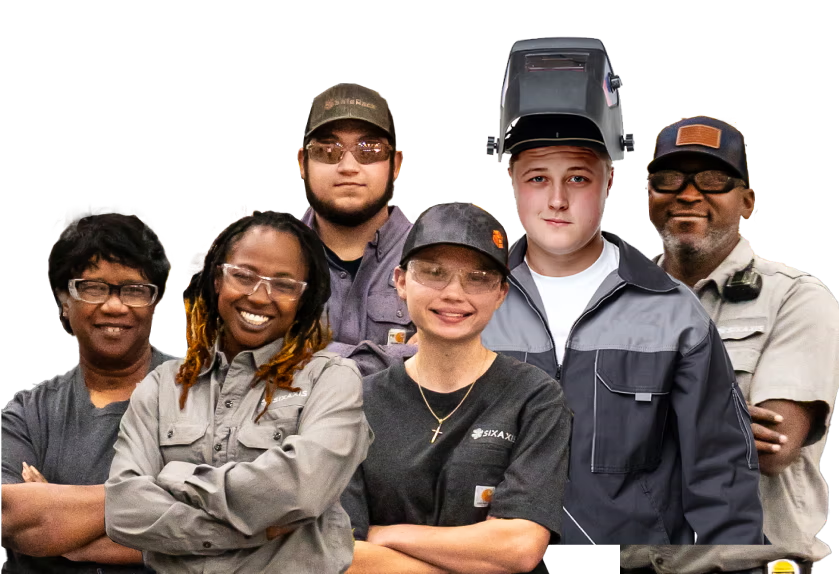

 Download
Download

